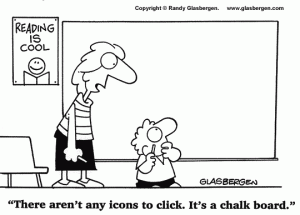
The biggest thing i have learnt throughout this unit is how to write a blog. Before this i didn’t know how to sign up for one or how to use one appropriately. I also think i have learnt lots about researching different topics and using different tools like ucansearch, e-reserve and Google scholar, and selecting reliable and relevant information sources from them.
Overall i learnt lots about impacts of ICT on education. Before this class i thought any use of technology would enhance learning . But now i understand that copying down notes from slides on a IWB is the same as older methods of teaching except it involves new technology. I can now appreciate that technology should only be used when it is going to enhance a lesson not just because it is there. I found researching the technologies which will be emerging in the future particularly interesting and was amazed at the paths learning and teaching are heading down.
Researching cyber bullying was something new for me. I had heard about cyber bullying but had never experienced it when I was at school. I have learnt just how damaging cyber bullying can be when defamatory material is posted for the whole world to see. I can also see now how much of a struggle it will be to help control cyber bullying. I think that its prevention strategies should be targeted at education on the subject, not prevention, to help children understand the reality of what they are doing and what they are causing to someone else as well as how it may affect them in the future.
So this is my last post for the unit Learning with Technology, hope you enjoyed reading.
its the end. eeeeaaaaaaaggghhhhhhhhh!
CoOlsy.

